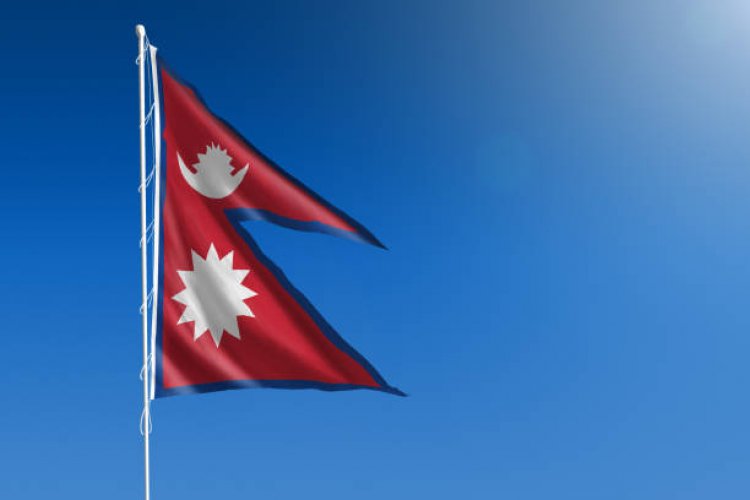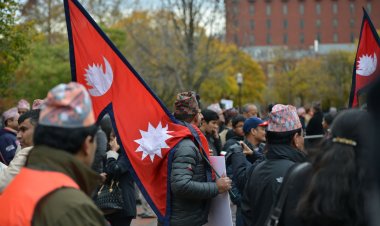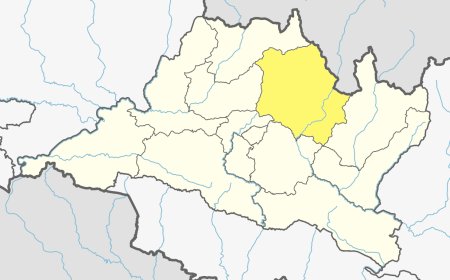About Nepal: A Fascinating Dive into Culture, Heritage, and Geography
Learn all about Nepal, from its rich culture and history to its stunning geography and top tourist attractions. Get a deeper understanding of this beautiful country today.

Nestled in the heart of South Asia, Nepal is a mesmerizing tapestry of diverse landscapes, ancient traditions, and a resilient spirit. This comprehensive guide invites you to embark on a journey through the geographical wonders, rich history, vibrant culture, and the delicate balance between tradition and modernity that define this enchanting country.
Geography: A Symphony of Peaks and Valleys
Nepal's geographical landscape is nothing short of a masterpiece, akin to a symphony where towering peaks and verdant valleys play in perfect harmony. Spanning approximately 147,181 square kilometers, Nepal is bordered by India to the south and east, and China to the north. However, what truly sets Nepal apart is its embrace of the mighty Himalayan range, a majestic presence that defines the country's geographical identity.
-
The Himalayas:
A Crown of Majesty: At the heart of Nepal, the Himalayas reign supreme. This mountain range, home to some of the world's highest peaks, including the iconic Mount Everest, creates a mesmerizing backdrop. The Himalayas not only captivate with their snow-capped summits but also influence the country's climate, culture, and way of life. As you traverse through Nepal, the ever-present Himalayan range serves as a constant companion, shaping the landscapes and offering breathtaking vistas. -
Valleys and Plains:
A Lush Tapestry: Beyond the lofty peaks, Nepal unfolds into a diverse tapestry of valleys, hills, and subtropical lowlands. The fertile plains, crisscrossed by rivers, are a testament to the country's agricultural prowess. Here, staples like rice, wheat, maize, millet, and pulses flourish, sustaining a significant portion of the population. The lush valleys, framed by hills and mountains, offer a serene escape and are often home to vibrant communities. -
Diversity of Terrain:
From Hills to Lowlands: Nepal's geography is characterized by its diverse terrain. The hills, rolling and verdant, create a picturesque setting that is both enchanting and accessible. Trekking trails wind through these hills, offering adventurers a chance to experience the beauty of Nepal at a more intimate level. Descending from the hills, the subtropical lowlands beckon with their warmth and biodiversity, providing a stark contrast to the alpine landscapes. -
Environmental Impact:
Balancing Fragility and Majesty: While the Himalayas contribute to Nepal's allure, they also pose environmental challenges. The country is susceptible to natural disasters, including landslides and avalanches, which can have a profound impact on the communities nestled in these regions. As Nepal balances the fragility and majesty of its geographical features, conservation efforts play a crucial role in preserving the unique ecosystems and mitigating environmental risks.
In essence, Nepal's geography is a symphony that harmonizes the commanding presence of the Himalayas with the lush beauty of its valleys and plains. It is a landscape that not only shapes the daily lives of its inhabitants but also serves as an irresistible invitation to explorers and nature enthusiasts, beckoning them to witness the grandeur of a country where nature's orchestration takes center stage.
Cultural Mosaic: Embracing Diversity
Nepal's cultural landscape is a captivating mosaic, shaped by a rich tapestry of religious beliefs, ethnic traditions, and linguistic diversity. With a population of approximately 29 million, the country stands as a shining example of harmony amidst diversity.
-
Religious Harmony:
At the heart of Nepal's cultural richness is the coexistence of multiple religions. Hinduism is the predominant faith, with the majority of the population adhering to its beliefs and practices. However, the nation is also home to a significant Buddhist community, particularly in regions like Lumbini, the birthplace of Buddha. Additionally, Islam and other religions contribute to the vibrant religious fabric, fostering an atmosphere of tolerance and mutual respect. -
Ethnic Traditions:
Nepal is a melting pot of ethnic diversity, with numerous ethnic groups each contributing its unique customs, languages, and rituals. The Gurungs, Newars, Tamangs, Tharus, and many others enrich the cultural tapestry with their distinct identities. From traditional clothing to age-old ceremonies, each ethnic group in Nepal has a story to tell, adding layers to the nation's cultural heritage. -
Languages and Dialects:
The linguistic diversity in Nepal is astounding, with a multitude of languages and dialects spoken across the country. While Nepali (also known as Gorkhali) serves as the official language and is widely spoken, numerous regional languages contribute to the linguistic mosaic. Newari, Maithili, Bhojpuri, and Tamang are just a few examples, each reflecting the cultural nuances of the communities that speak them. -
Festivals and Celebrations:
One of the most tangible expressions of Nepal's cultural diversity is witnessed in its festivals and celebrations. Dashain, the Hindu festival celebrating the victory of the goddess Durga over the demon Mahishasura, is observed with fervor and joy by people of all faiths. Tihar, the festival of lights, is marked by vibrant decorations, traditional music, and the worship of animals, emphasizing the close relationship between humans and nature. -
Arts and Crafts:
The diverse cultural influences in Nepal find artistic expression in traditional arts and crafts. Intricate woodcarvings, pottery, and weaving techniques vary from region to region, providing a visual feast for those interested in the country's artisanal heritage. These crafts not only showcase the skill and creativity of the Nepalese people but also serve as a link to their cultural roots.
In essence, Nepal's cultural mosaic is a celebration of diversity, where different religious beliefs, ethnic traditions, and languages coalesce to form a harmonious whole. This acceptance and celebration of differences contribute to the unique charm of Nepal, making it a place where unity is found in diversity, and cultural heritage is both preserved and continually evolving.
Economic Landscape: Nurturing Growth Amidst Challenges
Nepal's economic landscape is a dynamic tapestry, shaped by its rich agricultural traditions and a growing emphasis on diversification. With over 80% of its population engaged in agriculture, the fertile plains yield a bounty of staple crops, including rice, wheat, maize, millet, and pulses. This agrarian foundation, while crucial to the livelihoods of many, also poses challenges, particularly in the face of evolving economic needs and global shifts.
-
Agricultural Backbone: Sustaining Livelihoods:
The backbone of Nepal's economy lies in its agricultural sector. The majority of the population relies on farming for their livelihoods, cultivating crops that not only feed the nation but also contribute to the country's rich cultural traditions. The lush landscapes provide fertile grounds for a variety of crops, creating a robust foundation for sustenance. -
Economic Diversification: Beyond Agriculture:
In recent years, Nepal has actively sought to diversify its economic portfolio, recognizing the need to move beyond agrarian practices. Tourism, textiles, and hydroelectric power have emerged as pivotal sectors fostering growth and economic stability. The tourism industry, in particular, has played a significant role in bringing foreign currency into the country, with trekkers and adventurers drawn to Nepal's scenic beauty and trekking trails. -
Challenges and Opportunities: Striking a Balance:
Despite these strides, Nepal faces economic challenges, as reflected in its ranking of 145th out of 190 countries in the World Bank's ease of doing business index. The agrarian focus, coupled with bureaucratic hurdles, poses obstacles to foreign investment and business development. The country grapples with issues of infrastructure development, policy implementation, and streamlining regulatory processes. -
Tourism: A Key Economic Driver:
Tourism stands out as a beacon of economic hope for Nepal. The country's natural beauty, including the iconic Himalayan peaks, draws visitors from across the globe. Trekking trails, wildlife sanctuaries, and cultural attractions contribute significantly to the tourism sector. As the tourism industry flourishes, it not only boosts the economy but also creates employment opportunities and supports local businesses. -
Balancing Tradition and Progress:
A Delicate Dance: Nepal's economic landscape reflects a delicate dance between preserving cultural traditions and embracing modernity. While the agrarian roots and traditional arts contribute to the country's unique identity, there is a growing acknowledgment of the need for economic progress. The challenge lies in finding a balance that ensures sustainable growth without compromising the cultural and environmental integrity that makes Nepal so distinctive. -
Looking Ahead: Opportunities for Development:
As Nepal navigates its economic journey, there are promising opportunities for development. Investments in infrastructure, improvements in regulatory frameworks, and a strategic focus on sustainable tourism can propel the country towards a more robust and diversified economy. The global interest in eco-tourism and sustainable practices aligns well with Nepal's rich natural offerings, presenting avenues for responsible growth.
In essence, Nepal's economic landscape is a story of adaptation and resilience. From the fertile fields of traditional agriculture to the heights of the Himalayas attracting global adventurers, the country stands at a crossroads, balancing the embrace of progress with the preservation of its unique cultural heritage.
Historical Treasures: Echoes of the Past
-
Kathmandu: Living Museum of Nepal's History:
Nepal's capital, Kathmandu, is a living testament to the country's rich and storied past. The city stands as a vibrant hub where ancient traditions coalesce with contemporary life. Its narrow alleys and bustling squares are adorned with architectural marvels that echo the tales of bygone eras.-
The Heart of Kathmandu's Heritage:
At the heart of Kathmandu lies Durbar Square, a UNESCO World Heritage Site that encapsulates centuries of Nepalese history. This square, surrounded by palaces, courtyards, and temples, was once the royal seat of the Malla kings. Intricate woodwork, delicate carvings, and ancient statues adorn the structures, offering a glimpse into the opulence and artistic prowess of Nepal's historical rulers. -
Swayambhunath Stupa:
The All-Seeing Eyes of Buddha: Perched atop a hill overlooking Kathmandu, Swayambhunath Stupa, also known as the Monkey Temple, is a sacred Buddhist site. The stupa's whitewashed dome is crowned with the watchful eyes of Buddha, symbolizing wisdom and compassion. Pilgrims and visitors ascend the steep steps to soak in panoramic views of the city and absorb the spiritual energy that permeates the site.
-
-
Lumbini: The Cradle of Buddhism:
While Kathmandu narrates tales of kings and kingdoms, Lumbini, located in the Rupandehi District, holds the sacred honor of being the birthplace of Siddhartha Gautama, who later became Buddha. A UNESCO World Heritage Site, Lumbini is a pilgrimage destination for Buddhists from around the world. The Maya Devi Temple, dedicated to Buddha's mother, marks the exact spot where Siddhartha is believed to have been born.-
The Ashoka Pillar: A Testament to Buddhist Influence:
Near the temple stands the Ashoka Pillar, erected by Emperor Ashoka in 249 BCE. This pillar, with its inscriptions, signifies Ashoka's reverence for Buddhism and his dedication to spreading its teachings. The sacred pond, Puskarini, adds to the serene ambiance of Lumbini, creating a spiritual enclave that resonates with the profound impact of Buddha's birth.
-
Challenges and Resilience: Navigating Natural and Economic Turmoil
Nepal, while adorned with natural beauty and cultural richness, grapples with formidable challenges that stem from both natural forces and economic complexities.
-
Natural Disasters: Earthquakes and Landslides:
Nepal's geographical location, nestled in the seismically active Himalayan region, exposes it to the constant threat of earthquakes. The devastating earthquake in 2015 served as a stark reminder of the country's vulnerability. The aftermath witnessed widespread destruction of infrastructure, homes, and historical sites, significantly impacting the lives of the Nepalese people. Additionally, the mountainous terrain makes the country prone to landslides, especially during monsoon seasons, exacerbating the challenges faced by its residents. -
Economic Struggles: Poverty and Global Rankings:
Nepal grapples with economic challenges, positioning itself as one of the world's poorest nations. Despite the resilience of its people, the country faces hurdles in economic growth and development. On the global stage, Nepal is ranked 145th out of 190 countries on the World Bank's ease of doing business index. This ranking reflects the complexities and obstacles faced by businesses operating within the country, hindering its economic progress. -
Resilience: The Indomitable Spirit of the Nepalese People:
Despite facing these considerable challenges, the Nepalese people showcase remarkable resilience. In the aftermath of natural disasters, communities come together to rebuild their lives and restore their surroundings. The spirit of unity and perseverance is evident in the rebuilding efforts, with locals contributing to the reconstruction of homes, temples, and infrastructure. -
Aid and International Support: Collaborative Recovery:
In the wake of natural disasters, Nepal has received international aid and support. Collaborative efforts with foreign governments, non-governmental organizations (NGOs), and volunteers have played a crucial role in providing relief, rebuilding infrastructure, and supporting the affected communities. The international community's assistance has been instrumental in mitigating the impact of these disasters and fostering recovery. -
Sustainable Development Initiatives: Balancing Progress and Preservation:
Recognizing the need for sustainable development, Nepal has initiated projects aimed at balancing economic progress with environmental preservation. This includes efforts to build resilient infrastructure that can withstand natural disasters and initiatives to promote responsible tourism, minimizing the ecological footprint. -
Looking Forward: Building a Resilient Future:
As Nepal navigates the challenges posed by natural disasters and economic struggles, there is a collective determination to build a resilient future. The focus extends beyond recovery to proactive measures that strengthen the country's ability to withstand and recover from future challenges. This includes investments in disaster preparedness, sustainable development practices, and economic reforms to enhance the business environment.
In essence, the challenges faced by Nepal are met with a resilient spirit that defines the nation's character. The journey towards overcoming natural and economic turmoil is ongoing, fueled by the collective determination to build a stronger, more sustainable future for the generations to come.
Tradition Meets Modernity: Bridging the Gap
Nepal stands as a fascinating intersection where age-old traditions harmoniously coexist with the currents of modern life. This section explores how the country navigates the delicate balance between preserving its cultural heritage and embracing the conveniences of the contemporary world.
-
Preservation of Traditional Arts and Crafts:
Nepal takes immense pride in its traditional arts and crafts, handed down through generations. Woodcarving, pottery, and weaving are not just crafts; they are expressions of the country's cultural identity. Strolling through the ancient streets of cities like Kathmandu, visitors can witness artisans meticulously carving intricate designs on wooden panels, creating pottery with precision, and weaving vibrant fabrics that tell stories of Nepal's past. These artistic traditions not only showcase the country's cultural richness but also contribute significantly to its heritage. -
Integration of Modern Amenities:
Simultaneously, Nepal is not immune to the winds of change. Economic development has ushered in a wave of modern amenities that coexist seamlessly with traditional life. Robust transportation infrastructure, including modern roads and airports, facilitates connectivity across the country. Urban centers boast contemporary shopping malls, providing locals and tourists alike with access to a diverse range of goods. The influx of modern conveniences has not replaced tradition but has become an integral part of daily life, offering choices and comforts that enhance the overall quality of living. -
Cultural Festivals and Contemporary Celebrations:
Nepal's cultural calendar is punctuated with traditional festivals that have stood the test of time. However, these celebrations have evolved to embrace contemporary elements. Festivals like Dashain and Tihar, deeply rooted in Hindu and Buddhist traditions, now incorporate modern expressions of joy and togetherness. The lighting of traditional oil lamps during Tihar, for example, has taken on new significance with the addition of electric lights, creating a mesmerizing blend of ancient rituals and modern illuminations. -
Impact on Tourism:
The delicate dance between tradition and modernity significantly influences Nepal's tourism sector. While the country's natural beauty and historical sites attract those seeking a glimpse into the past, the integration of modern amenities enhances the overall tourist experience. Visitors can explore ancient temples in the morning and dine in contemporary cafes in the afternoon, providing a nuanced understanding of Nepal's multifaceted identity. -
Balancing Progress and Heritage:
Nepal's ability to balance progress and heritage is emblematic of its forward-looking approach. The country is not merely embracing modernity for the sake of development but is carefully navigating the integration process to ensure that the essence of its traditions remains intact. This delicate balancing act reflects a society that respects its roots while embracing the opportunities that progress brings.
Festivals and Celebrations: A Vibrant Tapestry of Traditions
Nepal, a country rich in cultural diversity, comes alive with a myriad of vibrant festivals and celebrations throughout the year. These occasions serve as more than mere rituals; they are a reflection of the deep-rooted traditions that bind communities together. Here's a closer look at some of the key festivals that paint Nepal's calendar with a kaleidoscope of colors and cultural significance:
-
Dashain: The Triumph of Good over Evil:
Dashain, often referred to as the "Bijaya Dashami," is the longest and most significant Hindu festival in Nepal. It typically spans 15 days, falling in the lunar month of Ashwin (September-October). The festival culminates on the tenth day, symbolizing the victory of the goddess Durga over the demon Mahishasura. Families come together during Dashain, offering prayers, receiving tika (a mixture of yogurt, rice, and vermilion), and exchanging blessings. Elders give "jamara" (barley grass) as a symbol of auspiciousness to younger members, fostering a sense of familial unity and goodwill. -
Tihar: The Festival of Lights:
Tihar, also known as Deepawali or Yamapanchak, is another major celebration, extending over five days. Falling in October or November, this festival is unique in its inclusivity, honoring not only Hindu deities but also animals such as crows, dogs, and cows. On the third day, known as Laxmi Puja, the goddess of wealth, Laxmi, is worshipped, and homes are illuminated with oil lamps and candles to invite prosperity. The fourth day, Govardhan Puja, involves worshipping oxen and their tools, recognizing the significance of agriculture in Nepalese society. The festival concludes with Bhai Tika, a day dedicated to the bond between brothers and sisters, marked by special rituals and the exchange of gifts. These celebrations are not confined to specific religious groups; rather, they permeate the fabric of Nepalese society, embracing diversity and fostering unity. The atmosphere during these festivals is one of joy, camaraderie, and a shared sense of cultural pride. -
Holi: The Festival of Colors:
Holi, the festival of colors celebrated in March, marks the arrival of spring and is a vibrant manifestation of joy and togetherness. People of all ages come together to play with colored powders, symbolizing the victory of good over evil and the arrival of a season of growth. The streets transform into a riot of colors as families, friends, and strangers join in the revelry, breaking down barriers and fostering a sense of community. -
Indra Jatra: Honoring Lord Indra and Kathmandu Valley's Living Goddess:
Indra Jatra is a traditional Newar festival celebrated in Kathmandu with grandeur. Held in September, the festival commemorates Lord Indra, the god of rain, and pays homage to Kumari, the living goddess of the Kathmandu Valley. The event is marked by various processions, including the Kumari Jatra, where the living goddess makes a public appearance, showcasing the rich cultural heritage of the Newar community.
These festivals not only uphold religious significance but also serve as an integral part of the social fabric, promoting harmony and understanding among diverse communities. The vibrancy, colors, and rituals during these celebrations offer a window into the soul of Nepal, where traditions are not just observed but celebrated with enthusiasm and shared joy.
Tourism: Unveiling Nepal's Beauty to the World
-
Nepal's Natural Splendors:
One of the prime attractions that draw travelers from across the globe to Nepal is its unparalleled natural beauty. Nestled within the Himalayan range, the country offers an array of breathtaking landscapes that captivate the imagination. From the towering peaks of Mount Everest, the highest point on Earth, to the serene lakes and lush valleys, Nepal provides a playground for nature enthusiasts and adventure seekers. -
Trekking Trails:
The trekking trails in Nepal are renowned worldwide for their scenic beauty and challenge. The Annapurna and Langtang regions, along with the iconic Everest Base Camp trek, beckon trekkers to embark on unforgettable journeys. These trails not only offer awe-inspiring views of the Himalayas but also provide an immersive experience into the local culture as trekkers traverse through quaint villages and interact with hospitable communities. -
Wildlife Sanctuaries:
For those seeking encounters with diverse flora and fauna, Nepal boasts several wildlife sanctuaries. The Chitwan National Park, a UNESCO World Heritage Site, is home to an array of wildlife, including the elusive Bengal tiger and the one-horned rhinoceros. Wildlife enthusiasts can engage in jungle safaris, bird watching, and other eco-friendly activities, contributing to Nepal's commitment to sustainable tourism. -
Historical and Cultural Attractions:
Beyond its natural wonders, Nepal's rich history and cultural heritage serve as magnetic attractions for tourists. The ancient city of Kathmandu, a UNESCO World Heritage Site, is a treasure trove of temples, palaces, and intricate architecture. Visitors can wander through the narrow alleys of Bhaktapur and Patan, exploring the cultural legacy embedded in every corner. -
Spiritual Pilgrimage:
Nepal is not only a physical destination but also a spiritual one. Lumbini, the birthplace of Buddha, is a sacred pilgrimage site for Buddhists worldwide. The tranquil ambiance of Lumbini, coupled with its historical significance, provides a unique spiritual experience for those seeking introspection and enlightenment. -
Cultural Festivals:
Tourists visiting Nepal are often enchanted by the vibrant cultural festivals that punctuate the calendar. From the colorful displays of Holi to the exuberant celebrations of Dashain and Tihar, visitors have the opportunity to immerse themselves in the rich tapestry of Nepalese traditions. These festivals not only showcase cultural diversity but also offer a warm and welcoming atmosphere for travelers. -
Economic Impact:
The tourism sector significantly contributes to Nepal's economy. As a major source of foreign exchange and employment, the industry plays a crucial role in uplifting local communities. The provision of hospitality services, guided treks, and cultural experiences not only enrich the travel experience but also contribute to the sustainable development of the region.Sustainable Tourism Initiatives: Recognizing the delicate balance between tourism and environmental preservation, Nepal has increasingly embraced sustainable tourism practices. Initiatives such as community-based tourism and eco-friendly trekking are gaining momentum, ensuring that the beauty that attracts tourists remains preserved for future generations.
In essence, tourism in Nepal goes beyond being a mere industry; it's an immersive journey into the heart of a country that seamlessly blends natural wonders, cultural richness, and warm hospitality. Whether trekking in the Himalayas, exploring ancient cities, or participating in cultural festivities, tourists are treated to an experience that transcends the ordinary, leaving an indelible mark on their memories. Nepal, with its open arms and captivating landscapes, continues to unveil its unparalleled beauty to the world.
Conclusion:
In conclusion, Nepal is a country that invites exploration and discovery. Its diverse landscapes, rich cultural heritage, and the indomitable spirit of its people create a tapestry of beauty and resilience. Whether you are drawn to the towering peaks of the Himalayas, the historical wonders of Kathmandu, or the cultural celebrations that permeate daily life, Nepal stands as a testament to the beauty of South Asia. As the country continues to evolve, balancing tradition and modernity, it remains an inviting destination for those eager to experience a unique blend of ancient charm and contemporary vibrancy.
What's Your Reaction?





































































































